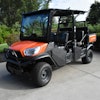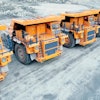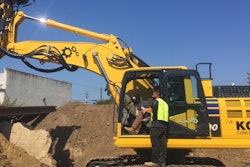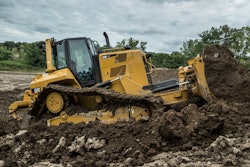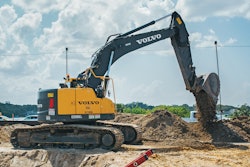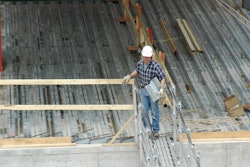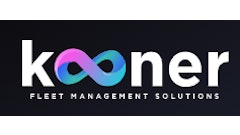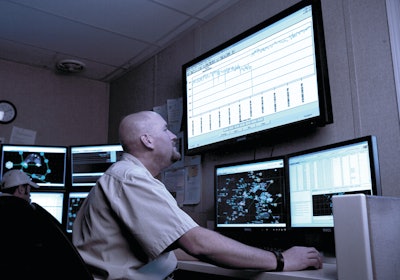
Fleet managers wear different hats from day to day, says Larry LeClair, CEM, equipment manager for A.J. Johns. When it comes to managing equipment cost of ownership and lifecycles, he has found that telematics-produced machine data is one of his most valuable allies in the constant battle to sort through what’s important and what’s not.
“Basically, ownership costs and lifecycles are the same thing in that they complement each other,” he says. “Cost determines lifecycles and repair costs so you can make a decision on whether to dispose of a piece of equipment or give it a second life.
“Together they give us a snapshot of the machine’s historical performance, its track record of repairs, the cost of those repairs and other critical information, such as fuel consumption and oil analysis, for instance. Combined, the data creates a health report on what condition the equipment is in.”
The health report indicates if the machine can go back in the ring for another round, or if it has reached retirement age. In LeClair’s situation, his “health report” is physically a spreadsheet with an oil analysis attached.
Getting a handle on the data
This stream of data comes from a number of sources, including financial people, software information, maintenance data from the shop, production data from the field, and telematics alerts from the machine itself.
At times, those alerts can seem like an overwhelming barrage. Keeping this massive output of information under control and manageable is Herculean at best, especially since each fleet’s specific applications vary and the terrain and climate differ for each fleet all over the map.
Those reasons are why fleet professionals should work closely, as LeClair does, with dealers and spend a great deal of time with them, he says.
“For instance, we receive undercarriage data and oil analysis results. Dealers get the data as well. They see the data every day, which gives us another set of eyes, so to speak,” LeClair says. “The dealership provides (a liaison) between us and the OEM, which completes the AEMP Equipment Triangle we always speak about.”
For their part, OEMs create an advanced partnership with the fleet professional by providing performance guarantees to use for benchmarking, for instance.
“Benchmark everything,” LeClair says. “I took that advice and it has never let me down.”
He joined the ranks of AEMP in 2007 and became certified in 2009. When it comes to the data battle, one of the association’s most important accomplishments is its successful drive to create and complete the ISO telematics standards used in the industry today, he says.
“The standards have certainly made my job easier from a fleet standpoint,” LeClair says. “We now get data that is streamlined, and we get it in one place. That is a tremendous help for us in making better decisions.
“Things are starting to come together with telematics, and we’re beginning to see a lot of this going on among fleets,” he says.
Two especially key data points
At Komatsu America Corp., Matt Beinlich, deputy director of the business solutions group, and Robert Hussey, of the group’s product and service division, say they look at two things when it comes to deploying or disposing of a machine. One is the annual utilization of the equipment, and two is the load factor.
“Annual utilization is the number of hours put on the machine over a 12-month period, and the load factor tells us how hard that machine has been working in that timeframe,” says Hussey. “If a fleet manager looks at those two things and finds that the utilization and load factor are too high, then that could suggest that the fleet is too small. If both are too low, the owner could lower his ownership costs by (right-sizing) the fleet.”
“Our group leverages the annual utilization data available through telematics to help fleet managers make decisions,” says Beinlich. “Usually, the larger the machine the higher the annual utilization. For example, if 20-ton excavators average 713 hours a year in North America, but a fleet manager has a unit running 1,500 hours a year—which is more than double—it might suggest that the fleet manager move up to a bigger machine.”
Another way telematics data helps is by showing the travel hours for tracked machines. For instance, if an undercarriage currently has 1,500 travel hours, and the fleet manager knows he has another 1,500 hours of remaining undercarriage life, he might want to hang onto that unit, says Beinlich.
Benchmarking also allows customers to see how they are running compared to other fleets across the country. By looking at such areas as fuel consumption, they have a gauge to start from.
Monitoring equipment operation
Another way OEMs use telematics data to benefit customers, says Hussey, is monitoring equipment operation. For example, if a customer has an operator dragging the brake—that is, pushing on the accelerator and the brake at the same time—the dealer or OEM can proactively see if an error has occurred through alerts and provide operator training.
Telematics also helps fleet managers determine lifecycles, says Hussey. For instance, when considering whether to overhaul a machine, telematics can provide useful data, such as the total number of gallons of fuel consumed over the life of the engine.
“This knowledge, with the aid of a dealer or OEM, often prevents fleet managers from prematurely overhauling a unit before the optimal time,” Hussey says. “Furthermore, telematics provides average utilization per unit, which can be used to estimate how many hours will be put on a machine during a project. If the fleet manager has several long-term projects coming up and sees that there are no gaps to plan for downtime to make major repairs, he knows he runs the risk that those unplanned downtimes could interrupt the project. In a case like that, he should dispose of the high-hour units and replace them with new or lower hour units.”
Telematics data also trigger intervention codes, which provide fleet managers with insight into the health of their equipment. By analyzing the frequency of these codes, they can proactively repair or replace those units before a major failure occurs.
Tips on starting with telematics
Whatever size fleet you have, Hussey advises first-time telematics users to start small and start with fuel economy. “They also should realize that telematics only helps a portion of this; job site environment and type of work coming up have to play into the equation.”
The third suggestion, he says, is that OEMs and dealers can help each customer maximize whatever value they want to get out of the data. “They can help you make the transition when you are ready,” Hussey says. “There is always a learning curve, but OEMs and dealers will help you get through it.”
The impact this data has on ownership costs comes down to utilization, says Tim Truex, electrical and midsize equipment manager for Kokosing Construction Co.
“If we have underutilized equipment, that information provides the opportunity to work with operations to save costs. It could also mean you have too much equipment and your fleet size may need to be reduced. Focus on data points themselves. Telematics has allowed us to gather data more quickly and more accurately than we used to,” he says.
The type of information that comes back to the fleet manager is mostly basic, such as hour readings or fuel information. “Hours are the foundation of your utilization,” Truex says. “But you have to have a business philosophy providing a basis of what is acceptable and what is expected. Fuel consumption plays right into that as well.
“From a fleet manager’s perspective, one thing we’ve seen in working with OEMs or dealers as partners—and we’re working with a dealer right now—is (a way) to filter out nuisance alerts.”
Truex says he remembers getting data overload. “After you’ve received your 50th low fuel alert, you’re not paying attention to anything because you’ve tuned everything out. Ninety-nine percent of the time you’re getting alerts that your equipment manager can’t do anything about, like an air filter that is on the brink of clogging up. You might get those alerts weeks before the filter gets to that point.”
He says if OEMs or dealers act as the first responders, they “definitely help us to filter the noise so we are able to better manage our fleet.”
In addition, performance guarantees, fuel efficiency programs and ownership programs from a dealer/OEM are of great benefit to the fleet professional.
Although Truex says he hasn’t worked personally with a piece of equipment with this program, I would think these types of benefits would help in a couple of ways to give you a better handle on what’s going on the operating side.”
Truex also singles out benchmarking as another way lifecycles and ownership costs can benefit from dealer/OEM programs. “This management tool allows you to measure your fleet’s performance against a preset performance standard. Additionally, long-term warning alerts would be more accurate. What I mean by that is the machine appears to be running fine, but the data coming back shows a creeping increase in fuel usage or creeping contaminants in oil analysis.”
In summarizing all the advantages gained from a fleet manager’s partnership with OEMs and dealers, and if everything is to come together, the most important factor is to have a good business foundation that lets you leverage data points into more timely and useful information. “Otherwise,” Truex says, “they are just data points.”


